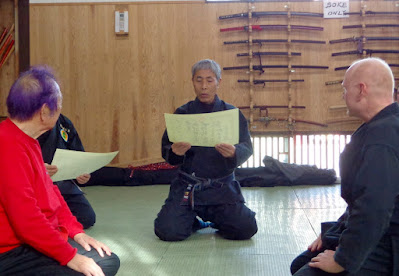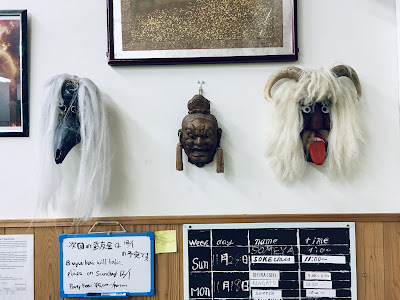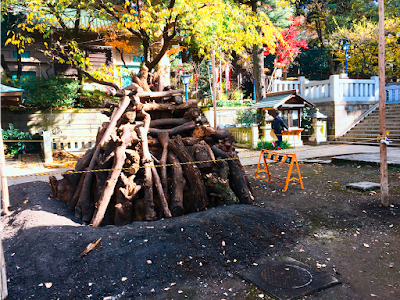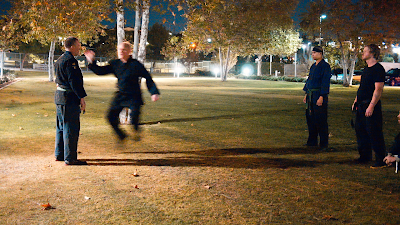Bujinkan 鎖分銅 Kusarifundō: Truth and Falsehood
From Bujinkan Santa Monica by Michael
 |
| Buki-mobile at 鎌倉・山海堂商店, photo by Michael Glenn |
Do you know the deepest levels of 虚実 kyojitsu lead down the path of 捨て身 sutemi? In a recent class I shared a dimension of kyojitsu that I’ve only ever heard expressed from Hatsumi Sensei. But is anyone willing to take this path?
During my class demo, I shot the weight of the 鎖分銅 kusarifundō out into the face of my opponent. A surprise 中振 nakafuri strike, but my use of it was for kyojitsu. The sound of the chain and the weight act as 目潰し metsubushi and caught the opponent’s attention. These sensations hid my next move.
It isn’t very safe to use a real kusarifundō in class. Unless your training partner likes dental work or a busted eyebrow, it is safer to use a short cord to practice. But then I noticed my students were missing a key aspect of this type of kyojitsu.
Most people think of kyojitsu as being a feint or fake. You mislead and distract the opponent from your real strategy. Many students stop there by using a fake-out. But, for kyojitsu to work, you must have both the truth and the falsehood.
You start with 虚 kyo… the illusion, and the next step is to see if your opponent believes it or not. If they do not, then you make the kyo into a real strike! The kyo becomes the 実 jitsu. If they don’t believe the lie, give them the truth. The truth hurts!
I shared more details about this during my Japan training with my kyojistu himaku article, where the line between illusion and reality is very thin. But I’m about to make it even thinner. So thin, even the words to describe it can be interpreted in many ways.
When I studied this technique with Hatsumi Sensei, he threw a tangled cord into his opponent's face. The more messy a rope or cord is, the more Soke seems to enjoy using it. Then he said something which contains a big clue for our use of weapons and kyojitsu.
From my Japan notes, I wrote the word for cord in Japanese is himo, and Soke said「紐全くてない」himo mattenai. On the surface this means no strings attached. Or, it could mean not being attached to the string yourself.
This concept is related to 捨て身 sutemi. Self sacrifice comes in the form of throwing away the self, dropping the ego, or even non-attachment to weapons. I allow the weapon to exist, but I don’t plan to use it. I only use it if it’s useful.
We’ve all heard Hatsumi Sensei advise us not to be attached to weapons. But if you focus on the use of a weapon, you yourself become trapped in its use. You may find yourself forcing techniques that are inappropriate for the situation. Or worse, fumbling with a weapon you do not know how to use, or that has malfunctioned.
Many people, when they hold a weapon, all of their focus goes to that weapon. I finished class with the hanbō, but unattached to it. I even throw it into the opponent’s face as a distraction. Throwing it all away leads to victory.
Remember that tangled cord that Hatsumi Sensei threw into his opponent’s face? Hatsumi Sensei did not try to untangle or force the rope to function in any particular way. He allowed it to be what it was. And somehow his technique tangled the opponent up in this mess.
It was like he attacked the opponent with the tangle itself. How did he do this? Well when you consider his advice, 「紐全くてない」himo mattenai, Soke was not telling us that we should be unattached to the rope. But that we must be one with it!
He reminded us to become one with our weapon when he said,
“You haven’t become one with the rope yet. You release it, and the rope becomes separate from your heart. If you learn to become one with your weapons then your movement will be the correct path of the heart.”
This path is the foundation for effective kyojitsu. Did you know that kyojitsu required this type of sutemi? I hope you get to explore this in your own training.
…





















